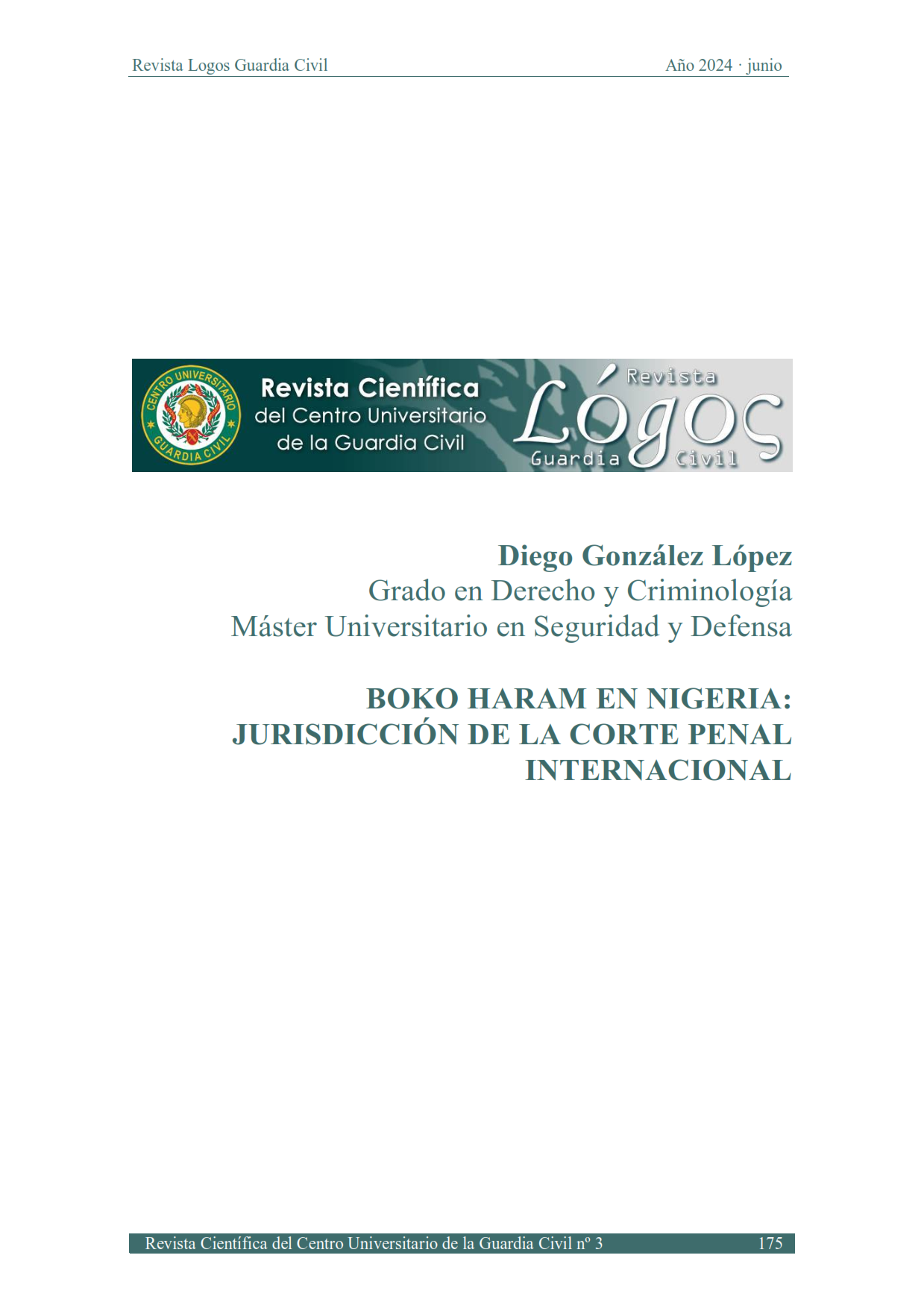Boko Haram in Nigeria: Jurisdiction of the International Criminal Court
Keywords:
Boko Haram, non-international armed conflict, International Criminal Court, Nigeria, terrorism.Abstract
This text aims to provide a general approach to the non-international armed conflict between Boko Haram and the State of Nigeria by analysing the actors involved, the root and immediate causes and phases of the conflict, as well as a delimitation of the jurisdiction of the International Criminal Court for war crimes perpetrated by the terrorist group Boko Haram in Nigeria (State Party to the Rome Statute). In addition, a brief general commentary is made on the effectiveness of the Court as an international tribunal with the power to investigate and try persons accused of the most serious crimes against the international community.
Downloads
References
Agboifo Ohu, E (5 de julio de 2000). Otro Estado de Nigeria implanta la ley islámica. Aceprensa. https://www.aceprensa.com/religion/otro-estado-de-nigeria-implanta-la-ley-isl-mica/
Ande, E (9 de diciembre de 2016). Un ataque de dos niñas suicidas con bomba deja 30 muertos en Nigeria. Reuters. https://www.reuters.com/article/nigeria-ataque-idESKBN13Y223/
Canales, P (2014). Boko Haram desafía a la comunidad internacional. Revista Española de Defensa, núm. 309.
Delia Deckard, N; Barkindo, A; Jacobson, D (2015). Religiosity and rebellion in Nigeria: Considering Boko Haram in the Radical tradition. Studies in Conflict & Terrorism.
Delgado Correcher, R (2023). El recurso a la jurisdicción internacional penal como mecanismo de lucha contra la amenaza terrorista y el yihadismo. Tirant lo Blanch.
Eduardo Carreño, L (2017). Grandes desafíos, ¿mecanismos idóneos?: evolución del pensamiento estratégico de Nigeria tras la emergencia de Boko Haram. Instituto de Estudios Internacionales, vol. 49, núm. 186.
Fernández de Gurmendi, S (2003). El Estatuto de Roma de la Corte Penal Internacional: Extensión de los crímenes de guerra a los conflictos armados de carácter no internacional y otros desarrollos relativos al derecho internacional humanitario. Derecho internacional humanitario y temas de áreas vinculadas, núm. 78.
Fuster Leal, R (2021). Descripción y análisis de un grupo terrorista: Boko Haram. Riesgos (inter) nacionales de un Estado frágil y una amenaza terrorista. Revista del Instituto Español de Estudios Estratégicos, núm. 18.
Güell Peris, S (2005). Conflictos armados internos y aplicabilidad del derecho internacional humanitario. Dykinson.
Nolivos, D (14 de julio de 2021). La estructura de Boko Haram. Geopol 21. https://geopol21.com/__trashed-3/
Ruiz-Giménez, I. (2015). Más allá de la “barbarie” de Boko Haram. Qué pasa en el norte de Nigeria. Viento Sur, núm. 139.
Olojo, A (2013). Nigeria’s Troubled North: Interrogating the Drivers of Public Support for Boko Haram. The International Centre for Counter-Terrorism – The Hague, núm. 7.
Santé Abal, J. M (2017). Nigeria, elenco de conflictos. Bie3: Boletín IEEE. núm. 5.
Torregrosa López, F. J.; López Pérez, R.; Garriga Guitart, D.; Sánchez Herrero, N.; García Collantes, A (2016). Boko Haram: análisis del fenómeno terrorista en Nigeria. Revista Criminalidad, núm. 1, vol. 58.
Zannarini, E (2023). La persecución de los crímenes internacionales cometidos en Ucrania ante la Corte Penal Internacional: cuestiones de competencia, jurisdicción y mecanismos de colaboración. Revista Electrónica de Estudios Internacionales, núm. 46.

Downloads
Published
Versions
- 2024-08-26 (3)
- 2024-07-04 (2)
- 2024-06-26 (1)
How to Cite
Issue
Section
License
Copyright (c) 2024 Diego González López

This work is licensed under a Creative Commons Attribution-NonCommercial-NoDerivatives 4.0 International License.
-
Attribution — You must give appropriate credit, provide a link to the license, and indicate if changes were made. You may do so in any reasonable manner, but not in any way that suggests the licensor endorses you or your use.
-
NonCommercial — You may not use the material for commercial purposes.
-
NoDerivatives — If you remix, transform, or build upon the material, you may not distribute the modified material.
- No additional restrictions — You may not apply legal terms or technological measures that legally restrict others from doing anything the license permits.



